Methylxanthine for the prevention and treatment of apnea in preterm infants
- PMID: 37905735
- PMCID: PMC10617014
- DOI: 10.1002/14651858.CD013830.pub2
Methylxanthine for the prevention and treatment of apnea in preterm infants
Abstract
Background: Very preterm infants often require respiratory support and are therefore exposed to an increased risk of chronic lung disease and later neurodevelopmental disability. Although methylxanthines are widely used to prevent and treat apnea associated with prematurity and to facilitate extubation, there is uncertainty about the benefits and harms of different types of methylxanthines.
Objectives: To assess the effects of methylxanthines on the incidence of apnea, death, neurodevelopmental disability, and other longer-term outcomes in preterm infants (1) at risk for or with apnea, or (2) undergoing extubation.
Search methods: We searched CENTRAL, MEDLINE, Embase, two other databases, and three trial registers (November 2022).
Selection criteria: We included randomized trials in preterm infants, in which methylxanthines (aminophylline, caffeine, or theophylline) were compared to placebo or no treatment for any indication (i.e. prevention of apnea, treatment of apnea, or prevention of re-intubation).
Data collection and analysis: We used standard Cochrane methods and GRADE to assess the certainty of evidence.
Main results: We included 18 studies (2705 infants), evaluating the use of methylxanthine in preterm infants for: any indication (one study); prevention of apnea (six studies); treatment of apnea (five studies); and to prevent re-intubation (six studies). Death or major neurodevelopmental disability (DMND) at 18 to 24 months. Only the Caffeine for Apnea of Prematurity (CAP) study (enrolling 2006 infants) reported on this outcome. Overall, caffeine probably reduced the risk of DMND in preterm infants treated with caffeine for any indication (risk ratio (RR) 0.87, 95% confidence interval (CI) 0.78 to 0.97; risk difference (RD) -0.06, 95% CI -0.10 to -0.02; number needed to treat for an additional beneficial outcome (NNTB) 16, 95% CI 10 to 50; 1 study, 1869 infants; moderate-certainty evidence). No other trials reported DMND. Results from the CAP trial regarding DMND at 18 to 24 months are less precise when analyzed based on treatment indication. Caffeine probably results in little or no difference in DMND in infants treated for prevention of apnea (RR 1.00, 95% CI 0.80 to 1.24; RD -0.00, 95% CI -0.10 to 0.09; 1 study, 423 infants; moderate-certainty evidence) and probably results in a slight reduction in DMND in infants treated for apnea of prematurity (RR 0.85, 95% CI 0.71 to 1.01; RD -0.06, 95% CI -0.13 to 0.00; NNTB 16, 95% CI 7 to > 1000; 1 study, 767 infants; moderate-certainty evidence) or to prevent re-intubation (RR 0.85, 95% CI 0.73 to 0.99; RD -0.08, 95% CI -0.15 to -0.00; NNTB 12, 95% CI 6 to >1000; 1 study, 676 infants; moderate-certainty evidence). Death. In the overall analysis of any methylxanthine treatment for any indication, methylxanthine used for any indication probably results in little or no difference in death at hospital discharge (RR 0.99, 95% CI 0.71 to 1.37; I2 = 0%; RD -0.00, 95% CI -0.02 to 0.02; I2 = 5%; 7 studies, 2289 infants; moderate-certainty evidence). Major neurodevelopmental disability at 18 to 24 months. In the CAP trial, caffeine probably reduced the risk of major neurodevelopmental disability at 18 to 24 months (RR 0.85, 95% CI 0.76 to 0.96; RD -0.06, 95% CI -0.10 to -0.02; NNTB 16, 95% CI 10 to 50; 1 study, 1869 infants; moderate-certainty evidence), including a reduction in the risk of cerebral palsy or gross motor disability (RR 0.60, 95% CI 0.41 to 0.88; RD -0.03, 95% CI -0.05 to -0.01; NNTB 33, 95% CI 20 to 100; 1 study, 1810 infants; moderate-certainty evidence) and a marginal reduction in the risk of developmental delay (RR 0.88, 95% CI 0.78 to 1.00; RD -0.05, 95% CI -0.09 to -0.00; NNTB 20, 95% CI 11 to > 1000; 1 study, 1725 infants; moderate-certainty evidence). Any apneic episodes, failed apnea reduction after two to seven days (< 50% reduction in apnea) (for infants treated with apnea), and need for positive-pressure ventilation after institution of treatment. Methylxanthine used for any indication probably reduces the occurrence of any apneic episodes (RR 0.31, 95% CI 0.18 to 0.52; I2 = 47%; RD -0.38, 95% CI -0.51 to -0.25; I2 = 49%; NNTB 3, 95% CI 2 to 4; 4 studies, 167 infants; moderate-certainty evidence), failed apnea reduction after two to seven days (RR 0.48, 95% CI 0.33 to 0.70; I2 = 0%; RD -0.31, 95% CI -0.44 to -0.17; I2 = 53%; NNTB 3, 95% CI 2 to 6; 4 studies, 174 infants; moderate-certainty evidence), and may reduce receipt of positive-pressure ventilation after institution of treatment (RR 0.61, 95% CI 0.39 to 0.96; I2 = 0%; RD -0.06, 95% CI -0.11 to -0.01; I2 = 49%; NNTB 16, 95% CI 9 to 100; 9 studies, 373 infants; low-certainty evidence). Chronic lung disease. Methylxanthine used for any indication reduces chronic lung disease (defined as the use of supplemental oxygen at 36 weeks' postmenstrual age) (RR 0.78, 95% CI 0.70 to 0.86; I2 = 0%; RD -0.10, 95% CI -0.14 to -0.06; I2 = 0%; NNTB 10, 95% CI 7 to 16; 3 studies, 2090 infants; high-certainty evidence). Failure to extubate or the need for re-intubation within one week after initiation of therapy. Methylxanthine used for the prevention of re-intubation probably results in a large reduction in failed extubation compared with no treatment (RR 0.48, 95% CI 0.32 to 0.71; I2 = 0%; RD -0.27, 95% CI -0.39 to -0.15; I2 = 69%; NNTB 4, 95% CI 2 to 6; 6 studies, 197 infants; moderate-certainty evidence).
Authors' conclusions: Caffeine probably reduces the risk of death, major neurodevelopmental disability at 18 to 24 months, and the composite outcome DMND at 18 to 24 months. Administration of any methylxanthine to preterm infants for any indication probably leads to a reduction in the risk of any apneic episodes, failed apnea reduction after two to seven days, cerebral palsy, developmental delay, and may reduce receipt of positive-pressure ventilation after institution of treatment. Methylxanthine used for any indication reduces chronic lung disease (defined as the use of supplemental oxygen at 36 weeks' postmenstrual age).
Copyright © 2023 The Cochrane Collaboration. Published by John Wiley & Sons, Ltd.
Conflict of interest statement
KM does not have any interests to disclose at this time.
MB is an Associate Editor for the Cochrane Neonatal Group. However, he had no involvement in the editorial processing of this review.
CCR: unconditional grant paid to the Department of Paediatrics, University of Oxford, UK, from Chiesi Pharmaceutical for an investigator‐initiated study looking at caffeine levels (routine dosing) in extreme preterm infants via analysis of routine blood tests, paired with vital sign analysis. The study is supported by an unconditional researcher grant; there is no company involvement with study analysis or interpretation. The University of Oxford and its ethics board have signed the study protocol and are monitoring its conduct. He had a fixed‐term contract as a Board member of Chiesi Farmaceutici's trial and safety oversight committee. CCR was reimbursed for this task. He was reimbursed as a consultant to Chiesi Farmaceutici for the development of an online teaching platform. He was the moderator of online expert meetings for AstraZeneca. He was a consultant for Chiesi Farmaceutici at an expert meeting on Laryngeal Mask Surfactant. CCR has received occasional invitations for commissioned lectures at courses and meetings. CCR has leadership roles in several academic societies, including the European Society for Paediatric Research and the European Respiratory Society. He is the co‐author of an article relevant to the interventions in the review (Moschino 2020).
PGD is an author and was a steering committee member on the included primary CAP study (Schmidt 2006), and its sub‐studies. This multicenter RCT involved his institution (the Royal Women's Hospital, Melbourne). The CAP study was funded by the Canadian (Canadian Institutes of Health Research [CIHR]) and Australian (National Health and Medical Research Council [NHMRC]) governments. He did not participate in data extraction or quality assessment of these publications. He receives salary support from the Australian Government (NHMRC).
MF is the Managing Editor and Information Specialist of Cochrane Neonatal; she did not participate in the editorial acceptance of this review.
RFS is the Coordinating Editor of Cochrane Neonatal, Vice President and Director of Clinical Trials of the Vermont Oxford Network, and Professor at the Larner College of Medicine, University of Vermont. He did not take part in the editorial processes for this review. He has a grant from Gerber Foundation to update reviews on interventions for pain and discomfort.
Figures

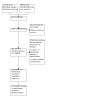

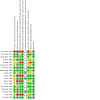
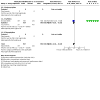

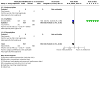
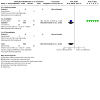
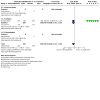


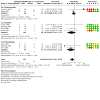
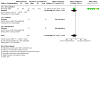

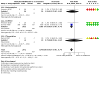






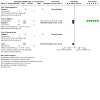
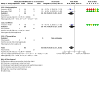
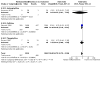
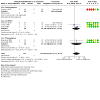


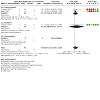
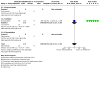


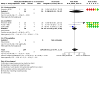
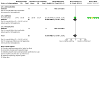



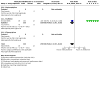
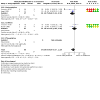

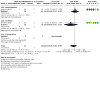
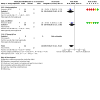

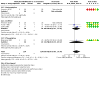

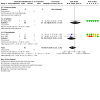
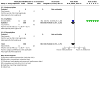

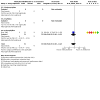


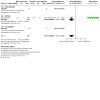
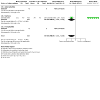

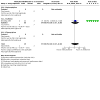
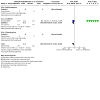
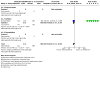



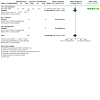
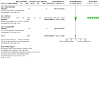
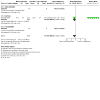
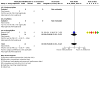
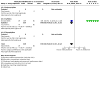
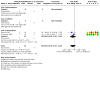
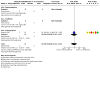

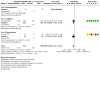
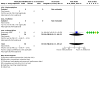


Update of
- doi: 10.1002/14651858.CD013830
References
References to studies included in this review
Armanian 2014 {published data only}
Armanian 2016 {published data only}
Barrington 1993 {published data only}
-
- Barrington KJ, Finer NN. A randomized controlled trial of aminophylline in ventilatory weaning of premature infants. Pediatric Research 1992;31:342A. - PubMed
Bucher 1988 {published data only}
Durand 1987 {published data only}
-
- Durand DJ, Goodman A, Ray P, Ballard RA, Clyman RI. Theophylline treatment in the extubation of infants weighing less than 1,250 grams: a controlled trial. Pediatrics 1987;80(5):684-8. [PMID: ] - PubMed
-
- Piecuch RE, Leonard CH, Ballard RA, Clyman RI. Neurodevelopmental outcome of very low birthweight VLBW (≤ 1000g) infants treated with theophylline (T) to facilitate extubation. Pediatric Research 1989;25(4):261A.
Elias‐Jones 1985 {published data only}
Erenberg 2000 {published data only}
-
- Erenberg A, Leff R, Wynne B. Results of the first double blind placebo (PL) controlled study of caffeine citrate (CC) for the treatment of apnea of prematurity (AOP). Pediatric Research 1998;43(Suppl 4):172. [DOI: 10.1203/00006450-199804001-01022] - DOI
Greenough 1985 {published data only}
Gupta 1981 {published data only}
Hegyi 1986 {published data only}
-
- Hegyi T, Hiatt IM, Stile IL, Zolfaghari S. Effects of postnatal aminophylline on the course of respiratory distress syndrome in premature infants. Clinical Therapeutics 1986;8(4):439-49. [PMID: ] - PubMed
Levitt 1988 {published data only}
-
- Levitt GA, Harvey DR. The use of prophylactic caffeine in the prevention of neonatal apnoeic attacks. Unpublished manuscript.
Murat 1981 {published data only}
Muro 1992 {published data only}
-
- Muro M, Perez-Rodriguez J, Garcia MJ, Arroyo I, Quero J. Efficacy of caffeine for weaning premature infants from mechanical ventilation. Effects on pulmonary function. Journal of Perinatal Medicine 1992;20:315.
-
- Muro M. Pharmacological treatment during the weaning of mechanical ventilation in preterm infants. Effects on pulmonary mechanics [Doctoral thesis]. Tratamiento farmacológico en la retirada de la ventilación mecánica del recién nacido pretérmino. Repercusión sobre la función pulmonar. Madrid: Facultad de Medicina, Universidad Autonoma de Madrid, 1992.
Pearlman 1991 {published data only}
-
- Pearlman SA, Kepler JA, Stefano JL. Comparative efficacy of theophylline and caffeine in facilitating extubation of preterm infants with respiratory distress syndrome. Unpublished manuscript written in 1991, provided by author.
-
- Pearlman SA, Stefano JL. Caffeine (C) vs theophylline (T) to facilitate extubation in preterm infants with RDS. In: Proceedings of the European Society for Paediatric Research. 1991:362.
Peliowski 1990 {published data only}
Schmidt 2006 {published data only}
-
- Doyle LW, Cheong J, Hunt RW, Lee K, Thompson D, Davis PG, et al. Caffeine and brain development in very preterm infants. In: Pediatric Academic Societies Annual Meeting. Baltimore (MD), 2009.
-
- Doyle LW, Schmidt B, Anderson PJ, Davis PG, Moddemann D, Grunau RE, et al, Caffeine for Apnea of Prematurity Trial investigators. Caffeine for apnea of prematurity trial investigators. Reduction in developmental coordination disorder with neonatal caffeine therapy. Journal of Pediatrics 2014;165(2):356-9.e2. [DOI: 10.1016/j.jpeds.2014.04.016] [PMID: ] - DOI - PubMed
Sims 1985 {published data only}
References to studies excluded from this review
Amaro 2018 {published data only}
-
- NCT01751724. Caffeine to reduce mechanical ventilation in preterm infants [Use of caffeine to reduce length of mechanical ventilation in preterm infants]. clinicaltrials.gov/study/NCT01751724 (first received 12 December 2012). [CENTRAL: CN-02036435]
Anwar 1986 {published data only}
Autret 1985 {published data only}
-
- Autret E, Breteau M, Laugier J, Gold F, Gautier C, Majzoub S. Comparison of 2 different maintenance doses of caffeine in the treatment of apnea in premature infants [Comparaison de deux doses d'entretien différentes de caféine dans le traitement des apnées du prématuré]. Therapie 1985;40(4):235-9. [PMID: ] - PubMed
Bairam 1987 {published data only}
-
- Bairam A, Boutroy M, Badonnel Y, Vert P. The choice between theophylline and caffeine in the treatment of apnea in premature infants [[Le choix entre theophylline et cafeine dans le traitement des apnees du premature]]. Archives Francaises de Pediatrie 1990;47:461‐5. [PMID: ] - PubMed
-
- Bairam A, Boutroy MJ, Badonnel Y, Vert P. Theophylline (T) vs caffeine (C) in the treatment of apnea in preterm infants. In: Pediatric Research. Vol. 20. 1986:342.
Brouard 1985 {published data only}
Cattarelli 2006 {published data only}
-
- Cattarelli D, Spandrio M, Gasparoni A, Bottino R, Offer C, Chirico G. A randomised, double blind, placebo controlled trial of the effect of theophylline in prevention of vasomotor nephropathy in very preterm neonates with respiratory distress syndrome. Archives of Disease in Childhood Fetal Neonatal Edition 2006;91:F80‐4. [DOI: 10.1136/adc.2005.073650] [PMID: ] - DOI - PMC - PubMed
Charles 2008 {published data only}
-
- Charles BG, Townsend SR, Steer PA, Flenady VJ, Gray PH, Shearman A. Caffeine citrate treatment for extremely premature infants with apnea: population pharmacokinetics, absolute bioavailability, and implications for therapeutic drug monitoring. Therapeutic Drug Monitoring 2008;30(6):709-16. [DOI: 10.1097/FTD.0b013e3181898b6f] [PMID: ] - DOI - PubMed
Cherif 2003 {published data only}
-
- Cherif A, Klouz A, Zouari B, Belkahia C, Boukef-Larguèche S. Monohydrated caffeine: which dosage is effective in the treatment of apnea of prematurity? [Caféine monohydratée: quelle posologie efficace dans le traitement des apnées du prématuré?]. Archives de Pédiatrie 2003;10(8):734-5. [DOI: 10.1016/s0929-693x(03)00345-2] [PMID: ] - DOI - PubMed
Dani 2000 {published data only}
Dekker 2017 {published data only}
Elmowafi 2021 {published data only}
Fuglsang 1989 {published data only}
Gharehbaghi 2016 {published data only}
-
- Gharehbaghi MM, Taheri M, Gharabaghi F. Comparing the effect of caffeine and aminophylline on the osteopenia of prematurity in neonates. Journal of Pioneering Medical Sciences 2016;6(3):84-8. [jpmsonline.com/jpms-vol6-issue3-pages84-88-oa-text-only-file-2/]
Gray 2011 {published data only}
Habibi 2019 {published data only}
-
- Habibi M, Mahyar A, Nikdehghan S. Effect of caffeine and aminophylline on apnea of prematurity. Iranian Journal of Neonatology 2019;10(2):37-41. [DOI: 10.22038/ijn.2019.33041.1468] - DOI
Haque 1989 {published data only}
-
- Haque KN, Al-Kharashi M, Waters C. Theophylline therapy for apnea of prematurity in Saudi preterm infants: therapeutic serum level and dosage. Annals of Saudi Medicine 1989;9(2):178-81. [DOI: 10.5144/0256-4947.1989.178] - DOI
Hochwald 2002 {published data only}
Jenjarat 2018 {published data only}
-
- Jenjarat K, Chitsrisakda N, Suksumek N, Chamnanvanakij S. A randomized controlled trial comparing serum theophylline levels and side effects between two regimens of aminophylline in preterm infants. Journal of the Medical Association of Thailand 2018;101(3):283-8. [jmatonline.com/index.php/jmat/article/view/8879]
Jones 1982 {published data only}
Katheria 2015 {published data only}
Konstantinidi 2019 {published data only}
-
- Konstantinidi A, Grivea G, Sokou R, Antonogeorgos G, Varhalama E, Kokori F, et al. Caffeine and gastric emptying time in very low birth weight neonates. In: 4th World Congress of Perinatal Medicine. Vol. 47. 2019:eA299. [DOI: 10.1515/jpm-2019-2501] - DOI
Kou 2019 {published data only}
Kumar 1992 {published data only}
-
- Kumar SP, Mehta PN, Bradley BS, Ezhuthachan SG. Documented monitoring (DM) shows theophylline (T) to be more effective than caffeine (C) in prematurity apnea (PA). Pediatric Research 1992;31(4 Part 2):208A.
Kumar 2017 {published data only}
-
- Kumar MS, Najih M, Bhat YR, Jayashree P, Lewis LE, Kamath A, et al. Prophylactic methylxanthines for preventing extubation failure in the preterm neonates with the gestational age of ≤ 30 weeks: a randomized controlled trial. Iranian Journal of Neonatology 2017;8(3):11-8. [DOI: 10.22038/ijn.2017.23031.1281] - DOI
Larsen 1995 {published data only}
-
- Lundstrom KE, Brendstrup L, Larsen PB, Skov L, Greisen G. Aminophylline and caffeine has different effects of CBF. In: Pediatric Research. 1994:274.
Laubscher 1998 {published data only}
Liu 2020 {published data only}
McPherson 2015 {published data only}
-
- McPherson C, Han Tjoeng T, Vavasseur C, Neil J, Inder T. The impact of high-dose caffeine on short-term clinical outcomes and brain growth. In: Pediatric Academic Societies annual meeting. 2011.
Mohammed 2015 {published data only}
-
- Mohammed S, Nour I, Shabaan AE, Shouman B, Abdel-Hady H, Nasef N. High versus low-dose of caffeine for apnea of prematurity: a randomized controlled trial. Pediatric Research 2014;31:208A. - PubMed
Mohd Kori 2021 {published data only}
Ozkan 2023 {published data only}
-
- Ozkan H, Cetinkaya M, Cakir SC, Saglam O, Koksal N. Effects of different onset times of early caffeine treatment on mesenteric tissue oxygenation and necrotizing enterocolitis: a prospective, randomized study. American Journal of Perinatology 2023;40(1):28-34. [DOI: 10.1055/s-0041-1727157] [PMID: ] - DOI - PubMed
Rhein 2014 {published data only}
-
- NCT01875159. Effects of caffeine on intermittent hypoxia in infants born preterm [Pilot study of effects of caffeine on intermittent hypoxia in infants born preterm]. clinicaltrials.gov/study/NCT01875159 (first received 03 March 2013). [CENTRAL: CN-02027632]
-
- Rhein LM, Dobson NR, Darnall RA, Corwin MJ, Heeren TC, Poets CF, et al, Caffeine Pilot Study Group. Effects of caffeine on intermittent hypoxia in infants born prematurely: a randomized clinical trial. JAMA Pediatrics 2014;168(3):250-7. [DOI: 10.1001/jamapediatrics.2013.4371] [PMID: ] - DOI - PubMed
Romagnoli 1992 {published data only}
Scanlon 1992 {published data only}
Shivakumar 2017a {published data only}
-
- Shivakumar M, Jayashree P, Najih M, Lewis LE, Bhat RY, Kamath A, et al. Comparative efficacy and safety of caffeine and aminophylline for apnea of prematurity in preterm (≤ 34 weeks) neonates: a randomized controlled trial. Indian Pediatrics 2017;54(4):279-83. [DOI: 10.1007/s13312-017-1088-0] [PMID: ] - DOI - PubMed
Shivakumar 2017b {published data only}
-
- Shivakumar MS, Najih M, Bhat YR, Jayashree P, Lewis LE, Kamath A, et al. Prophylactic methylxanthines for preventing extubation failure in the preterm neonates with the gestational age of ≤ 30 weeks: a randomized controlled trial. Iranian Journal of Neonatology 2017;8(3):11-18. [DOI: 10.22038/ijn.2017.23031.1281] - DOI
Skouroliakou 2009 {published data only}
Srinivasan 2002 {published data only (unpublished sought but not used)}
-
- Srinivasan P, Katz S, DeCristofaro J. Increased caffeine levels do not reduce the frequency of clinical cardiopulmonary events in neonates with apnea following repeat bolus therapy: A randomized controlled trial. In: Pediatric Research. Vol. 51 (4). 2002:420A.
Steer 2003 {published data only}
Steer 2004 {published data only}
-
- Steer P, Flenady V, Shearman A, Charles B, Gray PH, Henderson-Smart D, et al, Caffeine Collaborative Study Group Steering Group. High dose caffeine citrate for extubation of preterm infants: a randomised controlled trial. Archives of Disease in Childhood. Fetal and Neonatal Edition 2004;89(6):F499-503. [DOI: 10.1136/adc.2002.023432] [PMID: ] - DOI - PMC - PubMed
Wan 2020 {published data only}
Xiang 2021 {published data only}
-
- Xiang S, Liu D, Ma Y, Zhang N, Li H, Du X, et al. The effect of CPAO combined with caffeine citrate on apnea of prematurity. International Journal of Clinical and Experimental Medicine 2021;14(1):639-45. [ISSN:1940-5901/IJCEM0121790]
Yang 2019 {published data only}
Yu 2016 {published data only}
-
- Yu M, Huang JH, Zhu R, Zhang XZ, Wu WY, Wen XH. [Effect of caffeine citrate on early pulmonary function in preterm infants with apnea]. Zhongguo dang dai ER ke za zhi (Chinese Journal of Contemporary Pediatrics) 2016;18(2):206-10. [DOI: 10.7499/j.issn.1008-8830.2016.03.003] [PMID: ] - DOI - PMC - PubMed
Zhang 2019 {published data only}
-
- Zhang X, Zhang HT, Lyu Y, Wang LF, Yang ZY. Clinical effect and safety of different maintenance doses of caffeine citrate in treatment of apnea in very low birth weight preterm infants: a prospective randomized controlled trial. Zhongguo Dang Dai Er Ke Za Zhi [Chinese Journal of Contemporary Pediatrics] 2019;21(6):558–61. [DOI: 10.7499/j.issn.1008-8830.2019.06.011] [PMID: ] - DOI - PMC - PubMed
Zhao 2016 {published data only}
References to studies awaiting assessment
Fakoor 2019 {published data only}
-
- Fakoor Z, Makooie AA, Joudi Z, Asl RG. The effect of venous caffeine on the prevention of apnea of prematurity in the very preterm infants in the neonatal intensive care unit of Shahid Motahhari Hospital, Urmia, during a year. Journal of Advanced Pharmaceutical Technology and Research 2019;10(1):16-9. [DOI: 10.4103/japtr.JAPTR_334_18] [PMID: ] - DOI - PMC - PubMed
Iranpour 2022 {published data only}
Motlagh 2019 {published and unpublished data}
-
- Motlagh AJ, Tosi P, Rahimzadeh M. Evaluation of the effect of caffeine on apnea of preterm neonates hospitalized in intensive care unit: a clinical trial. International Journal of Pharmaceutical Research 2019;11(4):854‐60. [DOI: 10.31838/ijpr/2019.11.04.117] - DOI
Oliphant 2023 {published data only}
-
- Oliphant EA, McKinlay CJ, McNamara D, Cavadino A, Alsweiler JM. Caffeine to prevent intermittent hypoxaemia in late preterm infants: randomised controlled dosage trial. Archives of Disease in Childhood - Fetal and Neonatal Edition 2023;108(2):106-13. [DOI: 10.1136/archdischild-2022-324010] [PMID: ] - DOI - PMC - PubMed
-
- Oliphant EA, McKinlay CJ, McNamara DG, Alsweiler JM. (Rad 8) Caffeine prophylaxis to improve intermittent hypoxaemia in infants born late preterm: a randomised controlled dosage trial (Latte Dosage Trial). BMJ Open 2020;10(10):e038271. [DOI: 10.1136/bmjopen-2020-038271] [PMID: ] - DOI - PMC - PubMed
Reiterer 1992 {published data only}
-
- Reiterer F, Abbasi S, Stefano JL, Pearlman S, Bhutani VK, Fox W. Evaluation of methylxanthines for weaning VLBW infants with RDS from mechanical ventilation after surfactant therapy. Pediatric Research 1992;31:65A.
References to ongoing studies
ACTRN12621001000897 {published data only}
-
- ACTRN12621001000897. Comparing the prophylactic effects of caffeine versus placebo on the apnea of prematurity in neonates of Kabul City: a randomized clinical trial [Can caffeine prevent the cessation of breathing in preterm newborn babies?]. trialsearch.who.int/Trial2.aspx?TrialID=ACTRN12621001000897 (first received 30 July 2021). [CENTRAL: CN-02327162]
IRCT20170627034782N2 {published and unpublished data}
-
- IRCT20170627034782N2. Effect of prophylactic caffeine on the need for oxygen duration and respiratory support in preterm neonates with weight 1250-2000 gr with RDS requiring nasal CPAP. irct.ir/trial/42913 (first received 12 December 2019). [CENTRAL: CN-02069211]
IRCT2017102637023N1 {published data only}
-
- IRCT2017102637023N1. Effect of parenteral caffeine citrate for prevention of apnea in very preterm neonates in NICU ward. trialsearch.who.int/Trial2.aspx?TrialID=IRCT2017102637023N1 (first received 14 November 2017). [CENTRAL: CN-01901742]
Additional references
AAP 1978
-
- American Academy of Pediatrics. Task Force on Prolonged Apnea. Prolonged apnea. Pediatrics 1978;61(4):651-2. [PMID: ] - PubMed
AAP 2003
-
- Committee on Fetus and Newborn American Academy of Pediatrics. Apnea, sudden infant death syndrome, and home monitoring. Pediatrics 2003;111(4 Pt 1):914-7. [PMID: ] - PubMed
Alhersh 2020
Aranda 1983
Bauer 2001
Bayley 1993
-
- Bayley N. Bayley Scales of Infant Development. 2nd edition. San Antonio (TX): The Psychological Corporation, 1993.
Bayley 2006
-
- Bayley N. Bayley Scales of Infant and Toddler Development. San Antonio (TX): Harcourt Assessment, 2006.
Bell 1978
Blanchard 1992
-
- Blanchard PW, Aranda JV. Pharmacotherapy of respiratory control disorders. In: Beckerman RC, Brouillette RT, Hunt CE, editors(s). Respiratory Control Disorders in Infants and Children. Baltimore: Williams & Wilkins, 1992:352-70.
Bruschettini 2023
Butcher‐Puech 1985
Carnielli 2000
Clutario 1975
-
- Clutario BC. Clinical pulmonary function. In: Scarpelli EM, editors(s). Pulmonary Physiology of the Fetus, Newborn and Child. Philadelphia: Lea and Febiger, 1975:299-325.
Davis 2000
De Vries 1992
Di Fiore 2010
Eichenwald 1997
Ferguson 2017
Franco 2013
Fredholm 1995
Gamble 2005
Gerhardt 1979
-
- Gerhardt T, McCarthy J, Bancalari E. Effect of aminophylline on respiratory center activity and metabolic rate in premature infants with idiopathic apnea. Pediatrics 1979;63(4):537-42. [PMID: ] - PubMed
GRADEpro GDT [Computer program]
-
- GRADEpro GDT. Version accessed 4 December 2020. Hamilton (ON): McMaster University (developed by Evidence Prime), accessed 4 December 2020. Available at gradepro.org.
Griffiths 1954
-
- Griffiths R. The Abilities of Babies: A Study in Mental Measurement. New York (NY): McGraw-Hill Book Co., Inc., 1954.
Henderson‐Smart 1981
Henderson‐Smart 2004
-
- Henderson-Smart DJ. Recurrent apnoea in the newborn. In: Moyer VA, Elliott EJ, Gilbert R, Klassen T, Logan S, Mellis C, et al, editors(s). Evidence-Based Pediatrics. 2nd edition. London: BMJ Publishing Group, 2004:483-9. [DOI: 10.1002/9780470987384.ch47] - DOI
Henderson‐Smart 2010d
Higgins 2017
-
- Higgins JP, Altman DG, Sterne JA, editor(s). Chapter 8: Assessing risk of bias in included studies. In: Higgins JP, Churchill R, Chandler J, Cumpston MS, editor(s). Cochrane Handbook for Systematic Reviews of Interventions Version 5.2.0 (updated June 2017). Cochrane, 2017. Available from training.cochrane.org/handbook/archive/v5.2.
Higgins 2019
-
- Higgins JP, Churchill R, Chandler J, Cumpston MS, editor(s). Cochrane Handbook for Systematic Reviews of Interventions version 6 (updated July 2019). Cochrane, 2019. Available from www.training.cochrane.org/handbook.
Hoecker 2002
Hoecker 2006
ICCROP 2005
Jacobs 2013
Janvier 2004
Kiatchoosakun 2002
Kimball 2001
Kraaijenga 2015
Lodha 2015
-
- Lodha A, Seshia M, McMillan DD, Barrington K, Yang J, Lee SK, et al, Canadian Neonatal Network. Association of early caffeine administration and neonatal outcomes in very preterm neonates. JAMA Pediatrics 2015;169(1):33-38. [PMID: ] - PubMed
Lodha 2019
-
- Lodha A, Entz R, Synnes A, Creighton D, Yusuf K, Lapointe A, et al, Investigators of the Canadian Neonatal Network (CNN) and the Canadian Neonatal Follow-up Network (CNFUN). Early caffeine administration and neurodevelopmental outcomes in preterm infants. Pediatrics 2019;143(1):e20181348. [DOI: 10.1542/peds.2018-1348] [PMID: ] - DOI - PubMed
Marshall 2018
Mathew 1982
Milsap 1980
Moher 2009
Monteiro 2016
Moschino 2020
Noel‐Storr 2020
-
- Noel-Storr AH, Dooley G, Wisniewski S, Glanville J, Thomas J, Cox S, et al. Cochrane Centralised Search Service showed high sensitivity identifying randomised controlled trials: a retrospective analysis. Journal of Clinical Epidemiology 2020;127:142-50. [DOI: 10.1016/j.jclinepi.2020.08.008] [PMID: ] - DOI - PubMed
Noel‐Storr 2021
-
- Noel-Storr AH, Dooley G, Elliott J, Steele E, Shemilt I, Mavergames C, et al. An evaluation of Cochrane Crowd found that crowdsourcing produced accurate results in identifying randomised trials. Journal of Clinical Epidemiology 2021;4356(21):00008-1. [DOI: 10.1016/j.jclinepi.2021.01.006] [PMID: ] - DOI - PubMed
Palisano 1997
Papile 1978
Poets 2015
-
- Poets CF, Roberts RS, Schmidt B, Whyte RK, Asztalos EV, Bader D, et al, Canadian Oxygen Trial Investigators. Association between intermittent hypoxemia or bradycardia and late death or disability in extremely preterm infants. JAMA 2015;314(6):595-603. [DOI: 10.1001/jama.2015.8841] [PMID: ] - DOI - PubMed
Polin 2011
-
- Polin R, Abman S. Pathophysiology of apnea of prematurity. In: Fetal and Neonatal Physiology. 4th edition. Philadelphia: Elsevier/Saunders, 2011. [9781416034797]
Review Manager 2020 [Computer program]
-
- Review Manager 5 (RevMan 5). Version 5.4. Copenhagen: The Cochrane Collaboration, 2020.
Schmidt 1999
Schoen 2014
Schünemann 2013
-
- Schünemann H, Brożek J, Guyatt G, Oxman A, editors. Handbook for grading the quality of evidence and the strength of recommendations using the GRADE approach (updated October 2013). GRADE Working Group, 2013. Available from gdt.gradepro.org/app/handbook/handbook.html.
Shennan 1988
-
- Shennan AT, Dunn MS, Ohlsson A, Lennox K, Hoskins EM. Abnormal pulmonary outcomes in premature infants: prediction from oxygen requirement in the neonatal period. Pediatrics 1988;82(4):527-32. [PMID: ] - PubMed
Thomas 2021
-
- Thomas J, McDonald S, Noel-Storr AH, Shemilt I, Elliott J, Mavergames C, et al. Machine learning reduces workload with minimal risk of missing studies: development and evaluation of an RCT classifier for Cochrane Reviews. Journal of Clinical Epidemiology 2021;133:140-51. [DOI: 10.1016/j.jclinepi.2020.11.003vcvc] [PMID: ] - DOI - PMC - PubMed
Thurston1978
Tracy 2010
World Health Organization 2022
-
- World Health Organization. WHO recommendations for care of the preterm or low-birth-weight infant. www.who.int/publications/i/item/9789240058262 (accessed 10 October 2023).
References to other published versions of this review
Henderson‐Smart 2010a
Henderson‐Smart 2010b
Henderson‐Smart 2010c
Publication types
MeSH terms
Substances
LinkOut - more resources
Full Text Sources
Medical
Miscellaneous

